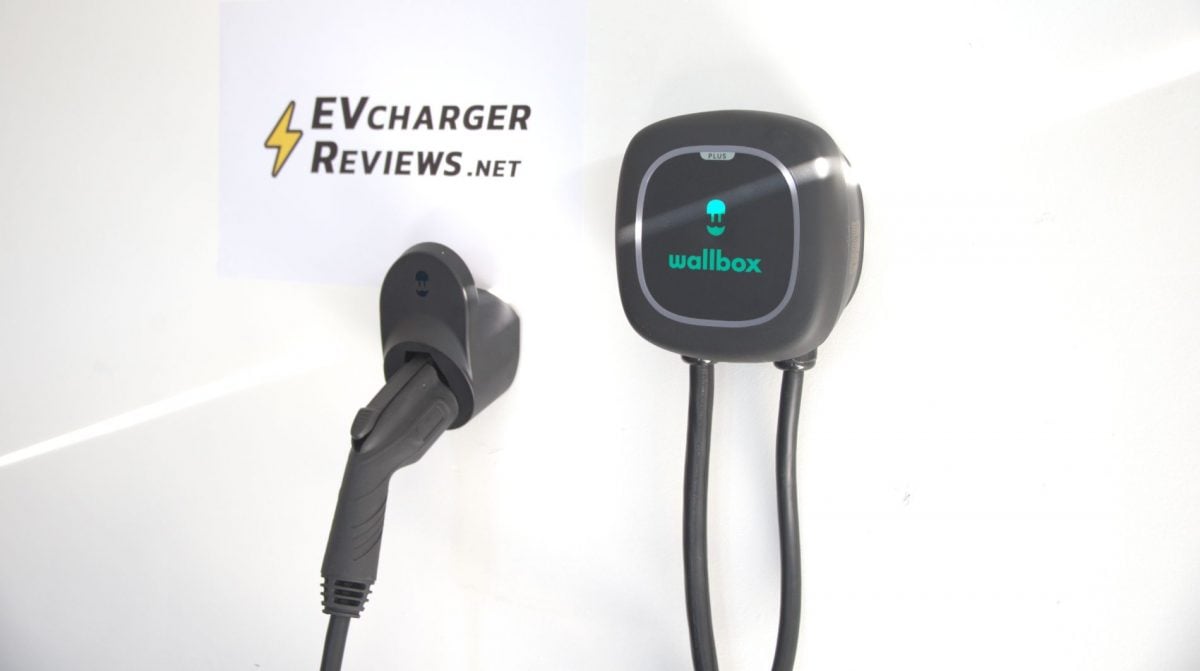The Wallbox Pulsar Plus is one of the most popular home EV charging stations on the market and for good reason. The combination of good design and simplicity makes this product a great fit for many garages. The Pulsar Plus is available in 40A and 48A versions and is commonly sold online and in retail stores between $599 and $650. Both versions of the Pulsar Plus have the NEMA 14-50 plug to receive power (but both can be hardwired into the home), and an industry-standard J1772 car connector.
The 48A version should only be considered when the charger is going to be professionally hardwired into the home by an electrician. When using the Pulsar Plus with a NEMA 14-50 wall outlet, both units max out at 40 amps of current due to the limitations of the 14-50 plug. A hardwired installation is required to get more than 40 amps out of the 48 amp version. This will mean the difference between a maximum charging rate of 9 kW and 11 kW.
Our Rating: 4.4/5
This review was originally published on June 27, 2022, and then substantially updated on August 13, 2023, after more than a year of frequent use.
Packaging and Installation
Our Pulsar Plus shipped double-boxed from Amazon in a Wallbox branded cardboard box, with the nice retail box serving as another protective layer. Inside, you will find the compact Pulsar Plus unit, instruction manual, and mounting accessories.
In locations with an accessible NEMA 14-50 receptacle, installation should take minutes. Please consult an electrician if a receptacle installation or hardwiring is required.
But wall mounting the Pulsar Plus is very straightforward. An envelope contains the necessary screws needed to securely attach the Pulsar Plus and the accessory cord holder to the wall. Four screws attach the mounting bracket to the wall. This home charger is not as heavy as some other competing products, but it is still necessary to screw the mounting bracket to a stud in the wall to prevent the unit from falling. Keep in mind that wrapping the cord around the unit will weigh it down further.
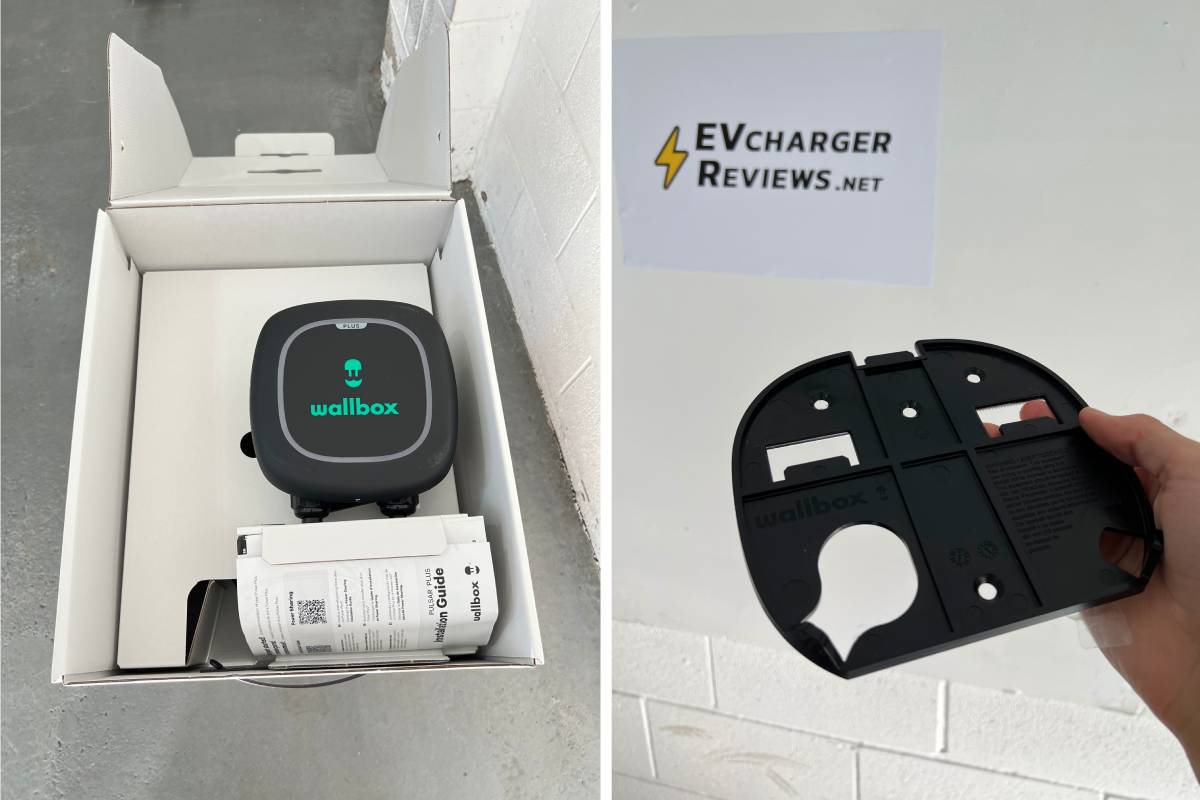
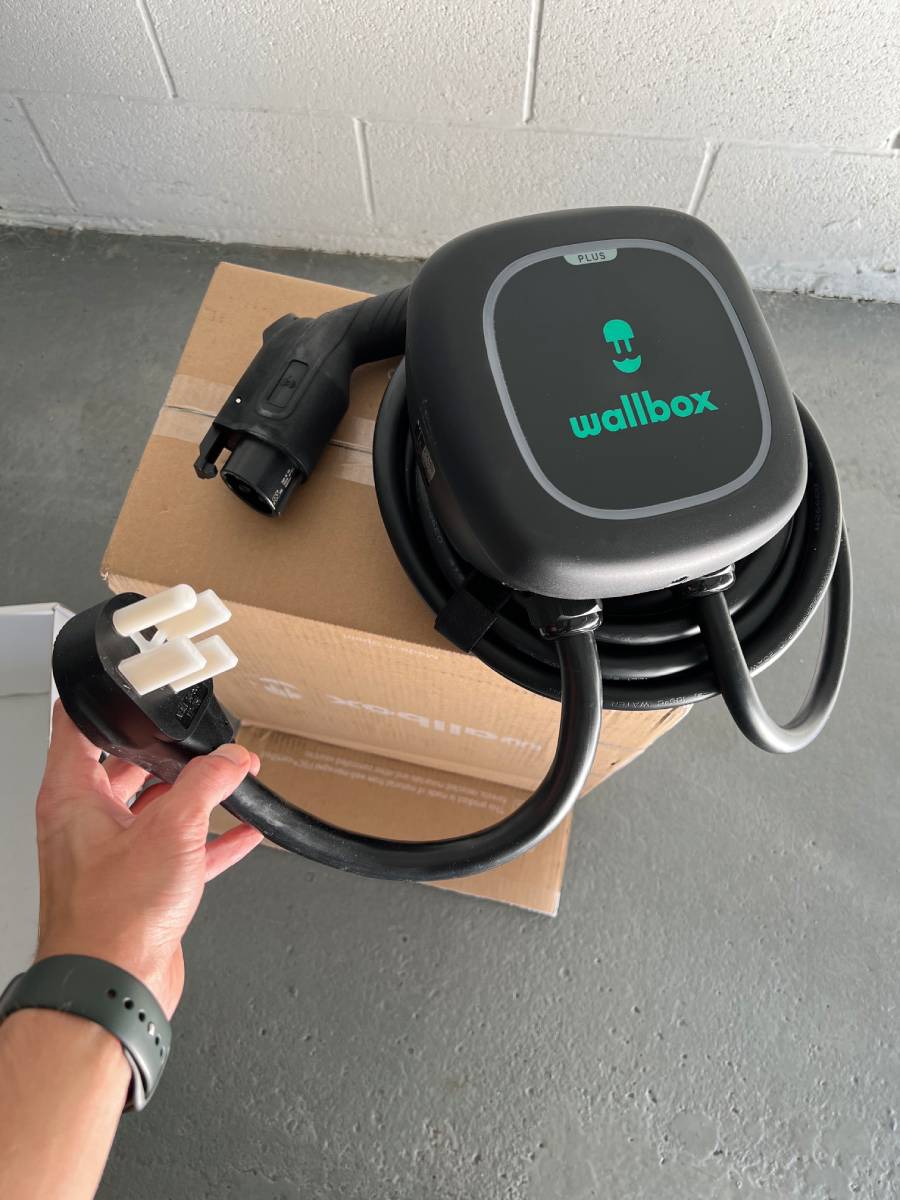
Hardware and Design
The Pulsar Plus is one of the more compact units on the market measuring roughly 8 by 8 by 4 inches. The enclosure is made of hard plastic with a grippy matte texture and does not feel cheap. The front face of the unit is dominated by the large right LED indicator light that Wallbox calls a “halo”. This large status indicator light makes it easy to understand what the charger is doing at a glance.
For the very cleanest-looking hardwired installation, it is possible to completely detach the NEMA 14-50 input cord, and route the input power cable through the back. Both the charger and the mounting bracket have this entry port in the back.
This charger is intended for indoor and outdoor operation and is NEMA Type 4 rated. This means the Pulsar Plus enclosure is designed to keep moisture out in wet conditions, and should have no problems in snowy climates.
Specification Summary
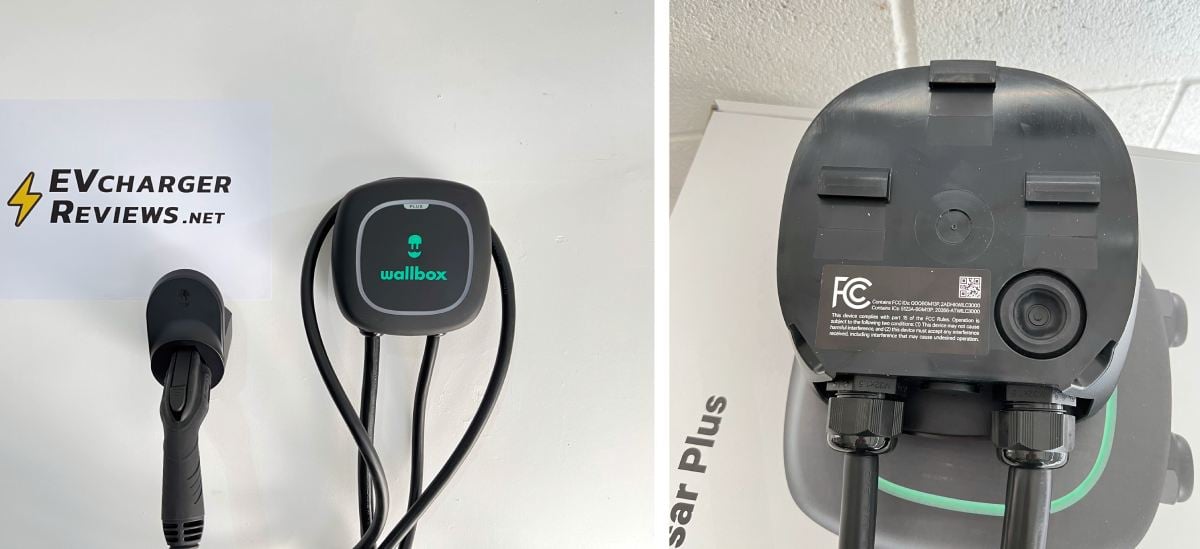
| Spec | Wallbox Pulsar Plus |
| Charging Level | Level 2 (240v) |
| Max Amps | 48 hardwired, 40 on NEMA 14-50 plug |
| Lowest Amp Setting | 6 Amps |
| Cord Length | 25 feet |
| Charging Connector | J1772 |
| Wall Connector | NEMA 14-50 |
| Connectivity | Wi-fi + App |
| Warranty | 3 years |
Charging Cord and J1772 Connector
The Pulsar Plus features a 25-foot-long charging cord on the car side of the box. This is the longest allowable length by regulation and should allow most drivers to park front/rear in their parking location and still reach the charging port. Points to Wallbox for including the longest possible charging cord.
The cable itself feels premium and able to take abuse and normal wear and tear in a typical garage usage. We’ve tested the Pulsar Plus in spring/summer conditions and found the cable to be very easy to manage and wrap around the holder. Some users are reporting that the rubber material becomes much less pliable in colder weather, but this is expected. We will update this review if it becomes a problem next winter season.
Update: We have since tried the Pulsar Plus in the depths of winter in below-freezing garage temperatures. Although the cord does become much stiffer in freezing temperatures, it did not prevent us from reaching the charging port or wrapping the cord for storage.
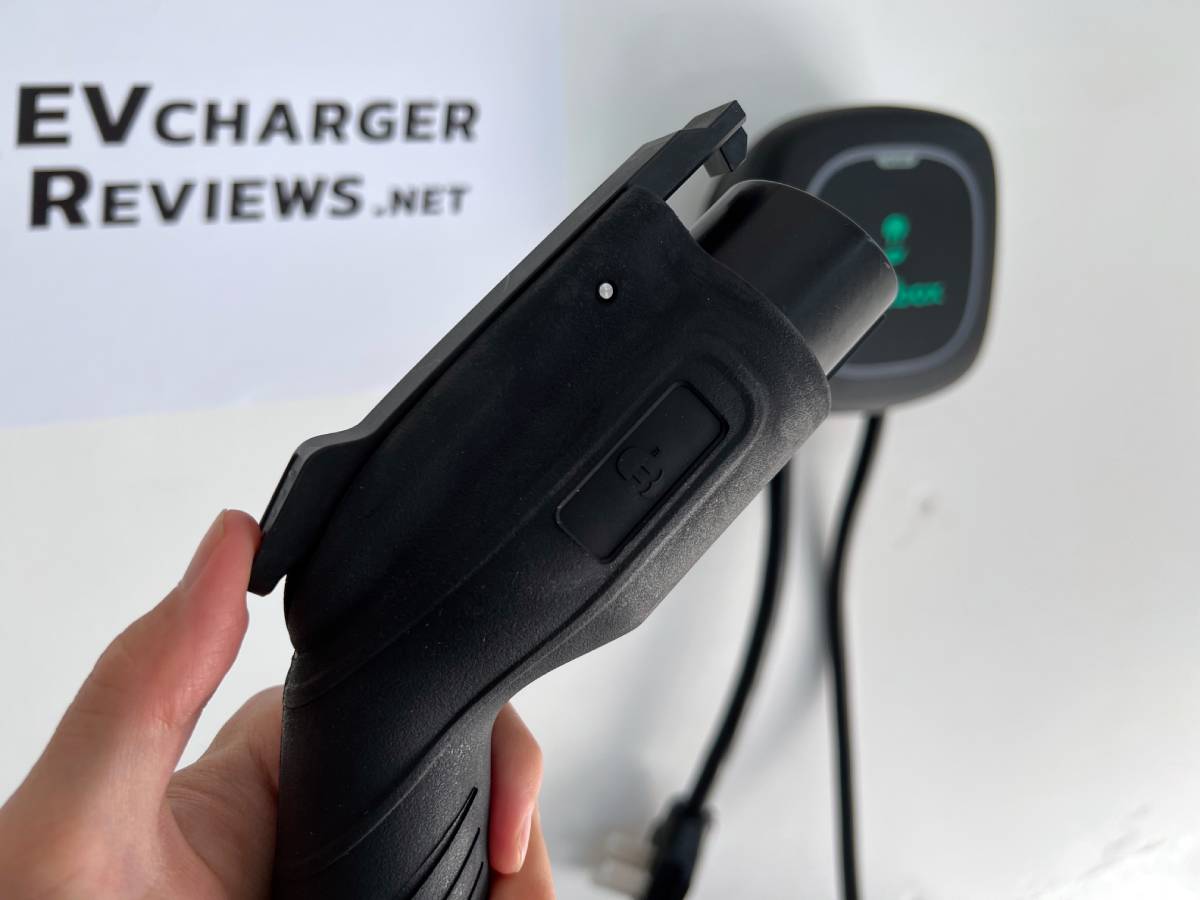
Connectivity and Software
Both versions of the Pulsar Plus come standard with Bluetooth and Wi-Fi connectivity. When first downloading the Wallbox app, it will prompt the user to create an account and pair the charger via Bluetooth. Bluetooth connections only have range measured in a few feet, so this will only work in close proximity. Wi-fi options are tucked away in connectivity options of the app, and allow the user to monitor the chargers from anywhere over the internet.
The Wallbox app is one of our favorites among smart home chargers. The home screen of the app offers a view all connected Wallbox chargers and their current status. The app makes it very easy to restrict the charging amps anywhere from 6 amps to the maximum 40 (or 48) amps.
This screen also allows the user to lock/unlock the charger with just a single tap. The LED status light on the charger turns yellow to signal a locked status.
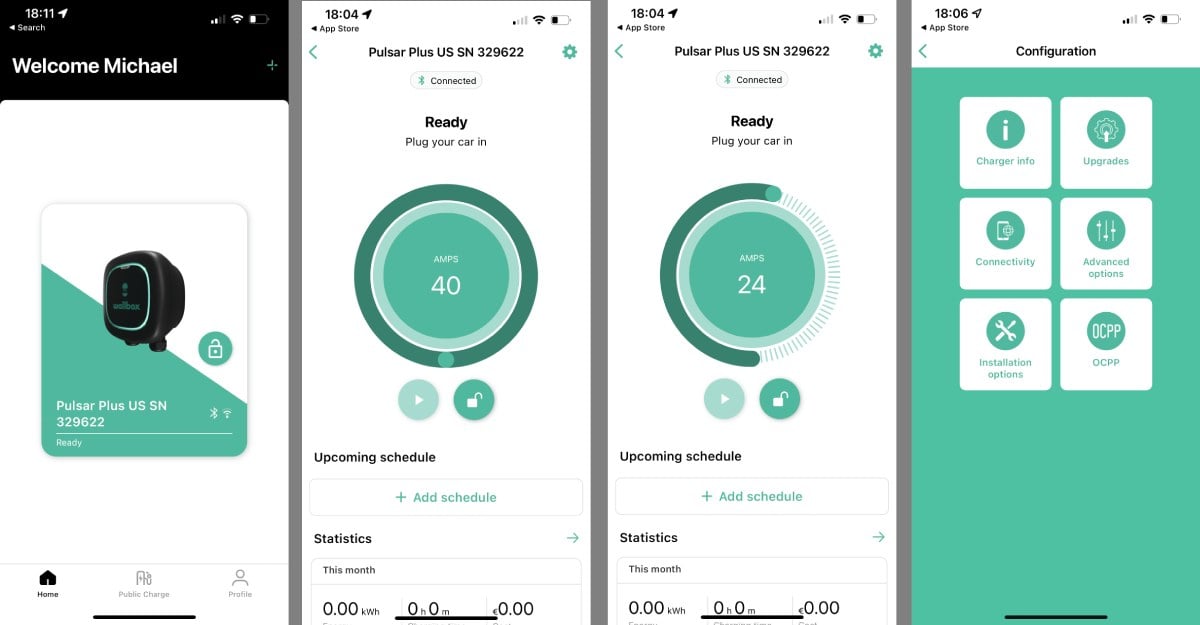
Scheduling
The Wallbox app also makes it easy to schedule specific charging windows by hours and days of the week. This allows the user to leave charging settings in their EV on defaults, and manage scheduling entirely from the Wallbox side. The LED status indicator light will flash turquoise on the charger unit when the Pulsar Plus is standing by for a scheduled charge.
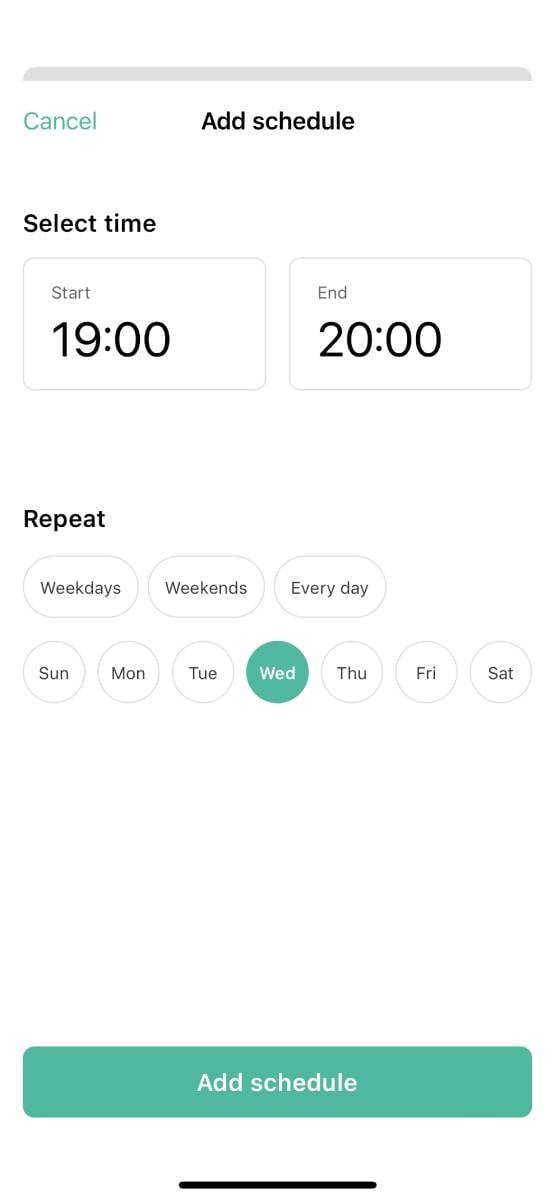
Conclusion
The Pulsar Plus is easy to recommend to most people. It is an attractive design, with a very clear LED indicator light, and easy to use smart connectivity features. The tapered and rounded shape of the box also allows for the wrapping of the cord around the charger unit, making cable management easier. The app is required for the initial setup, but users are not forced to use it for regular day to day operation. Our only areas of criticism are that the connector holder feels a little bit flimsy, and the charging cord becomes less pliable in extremely cold temperatures.
Shopping Options
Full Review Gallery
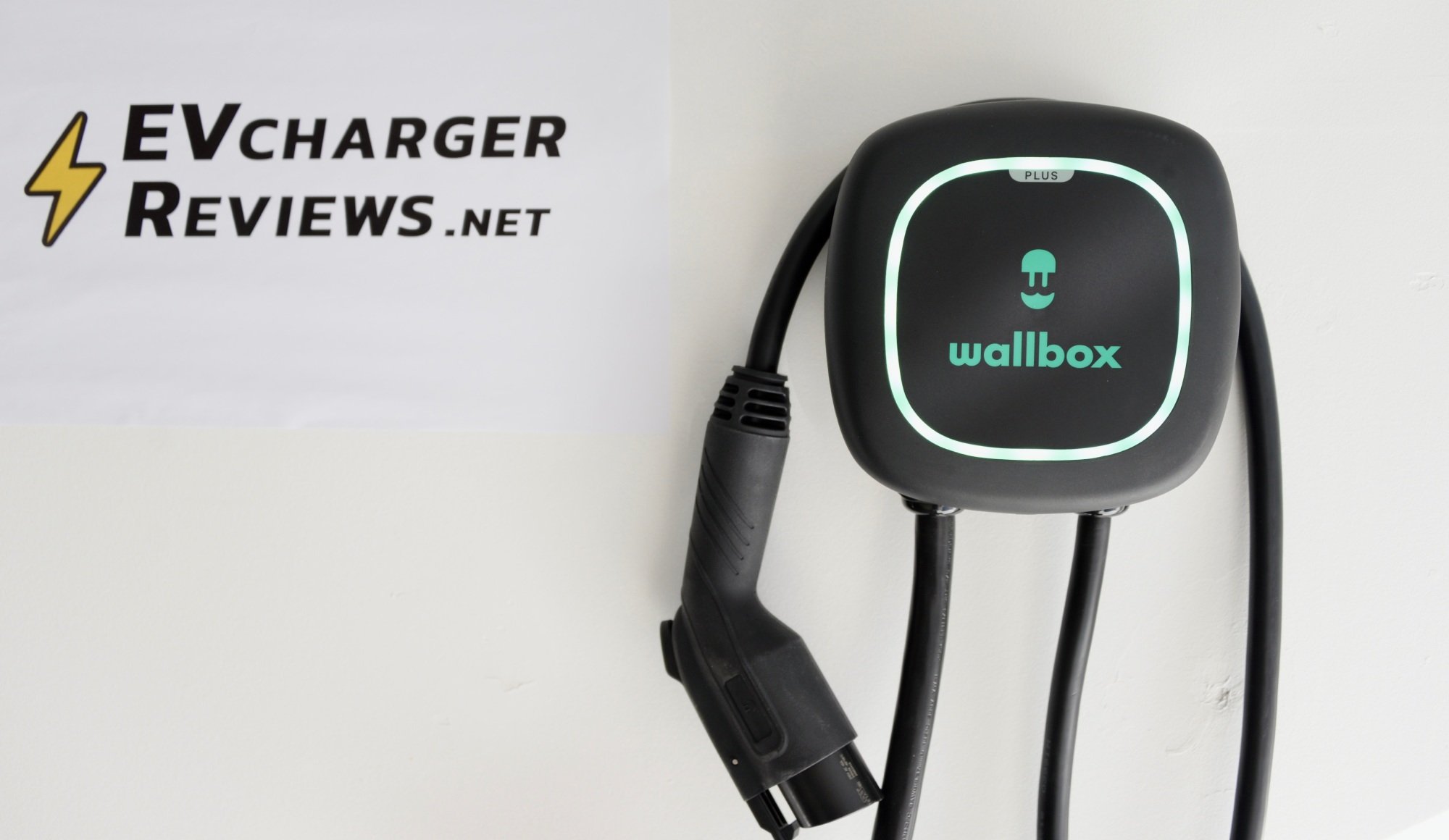
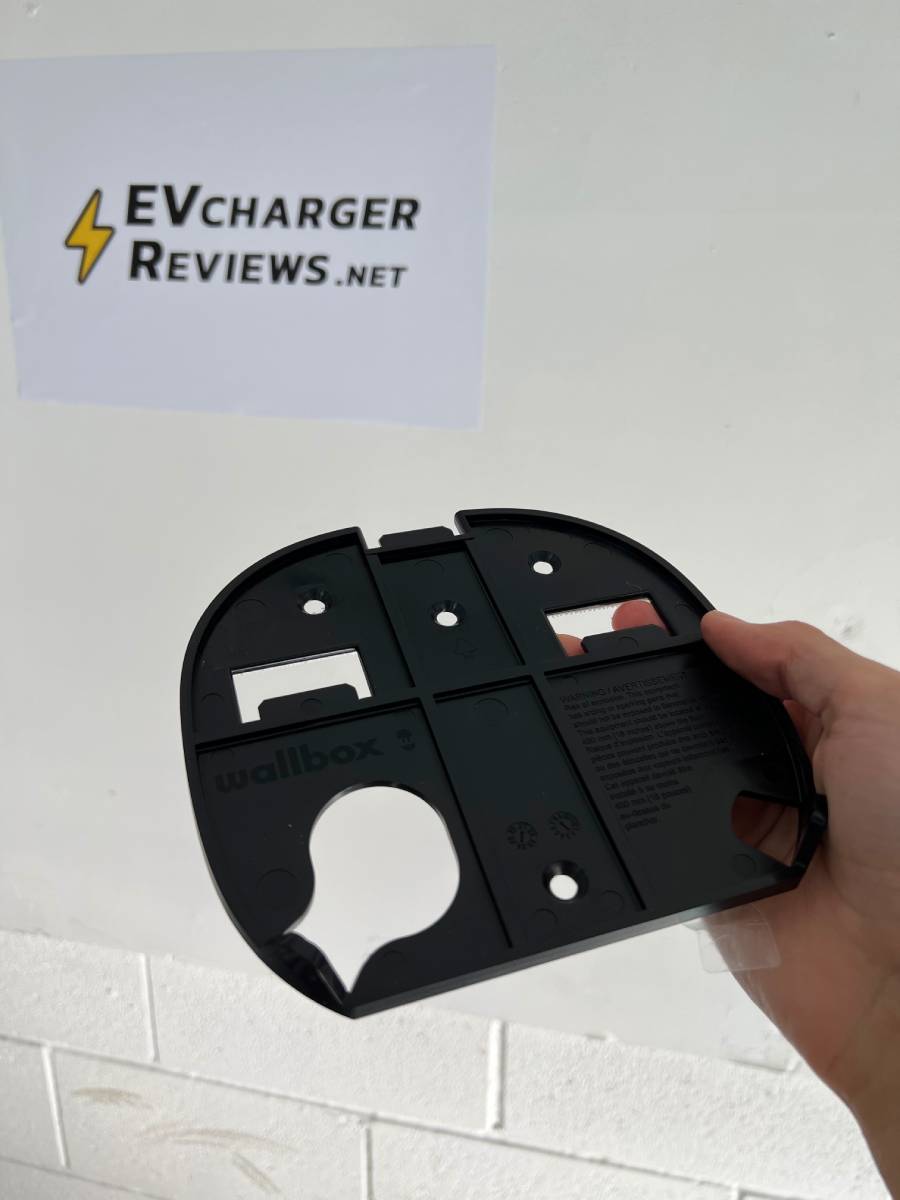
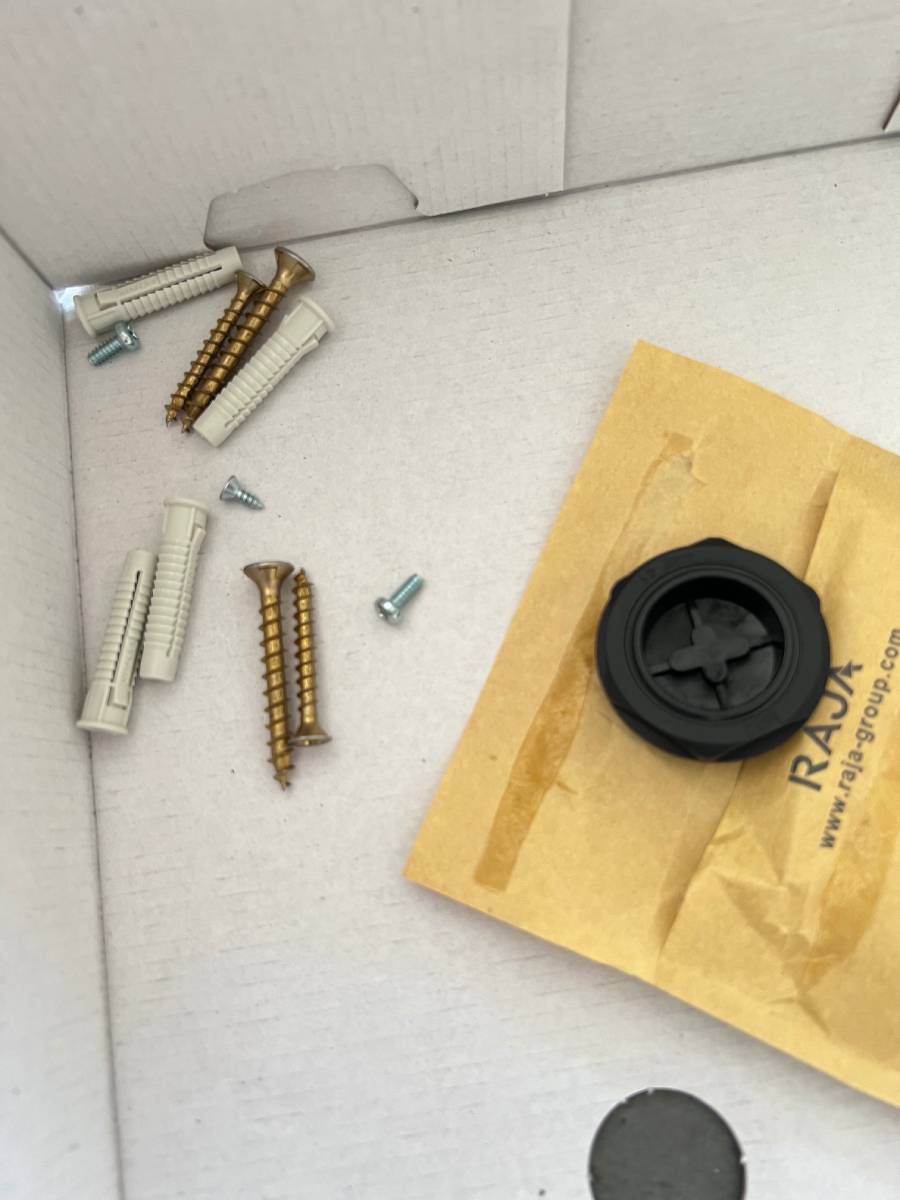
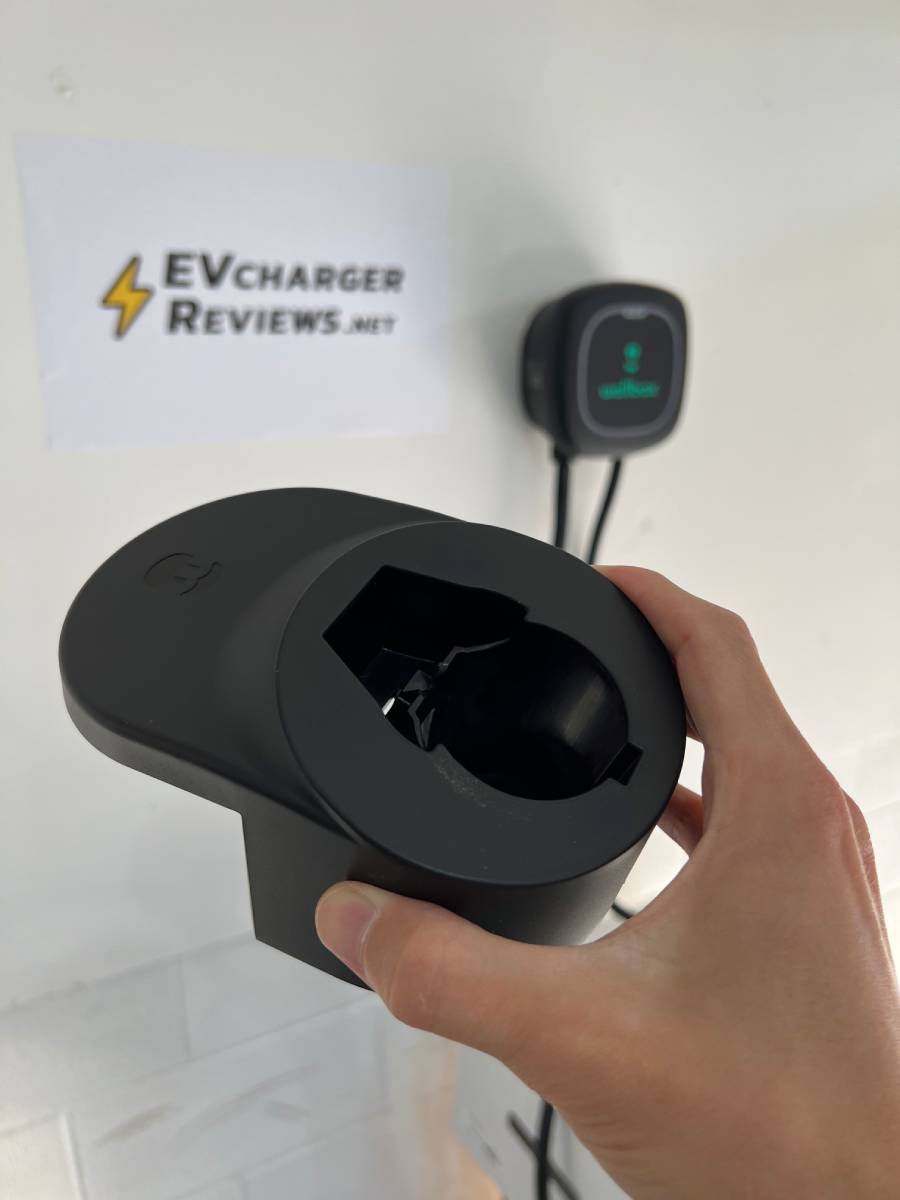
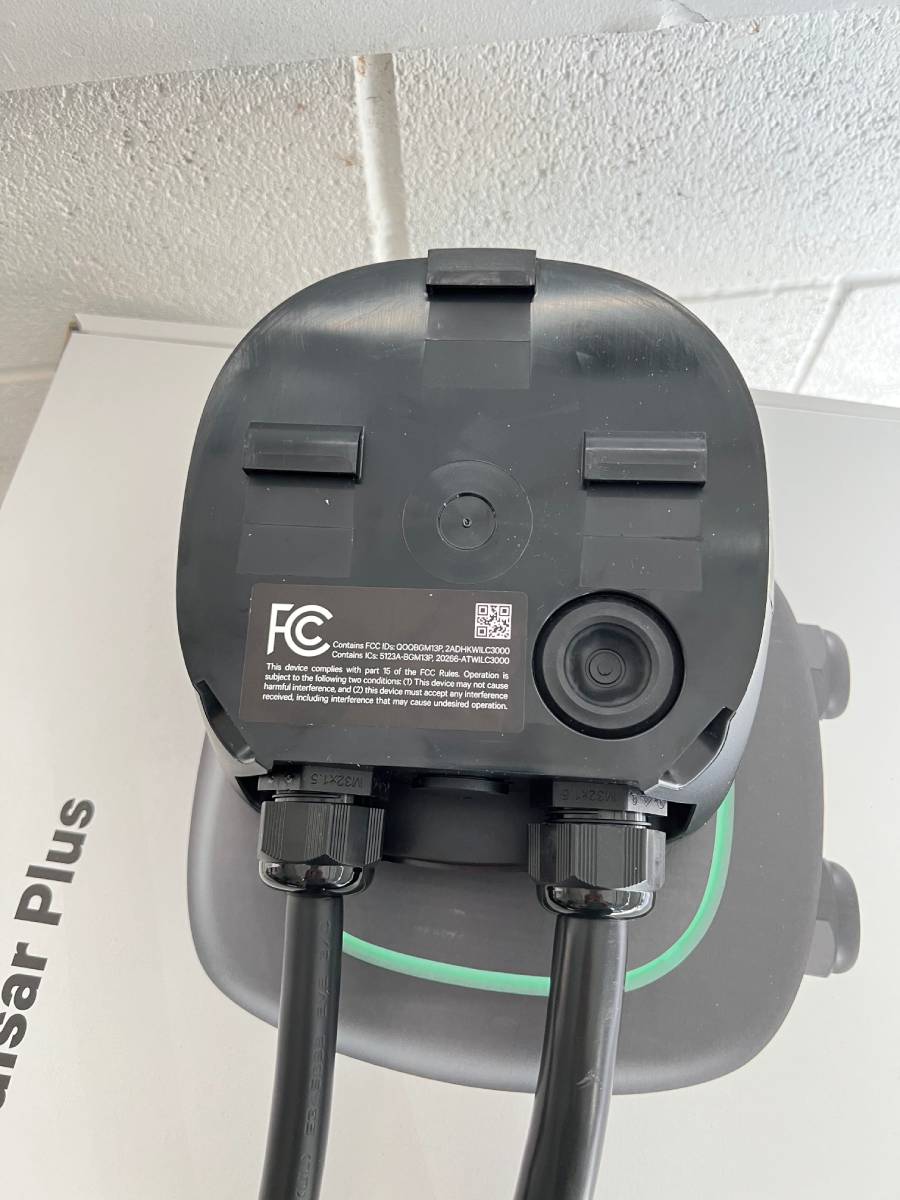

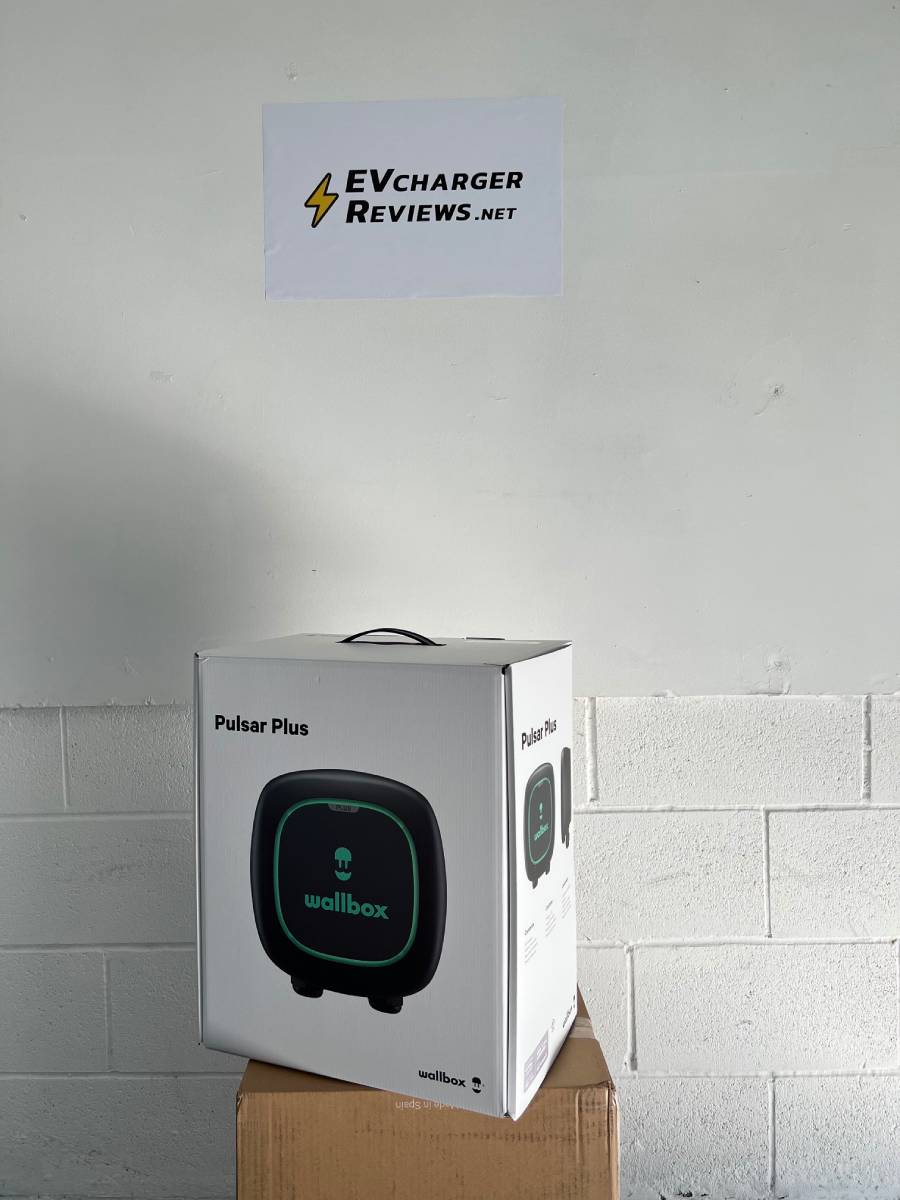


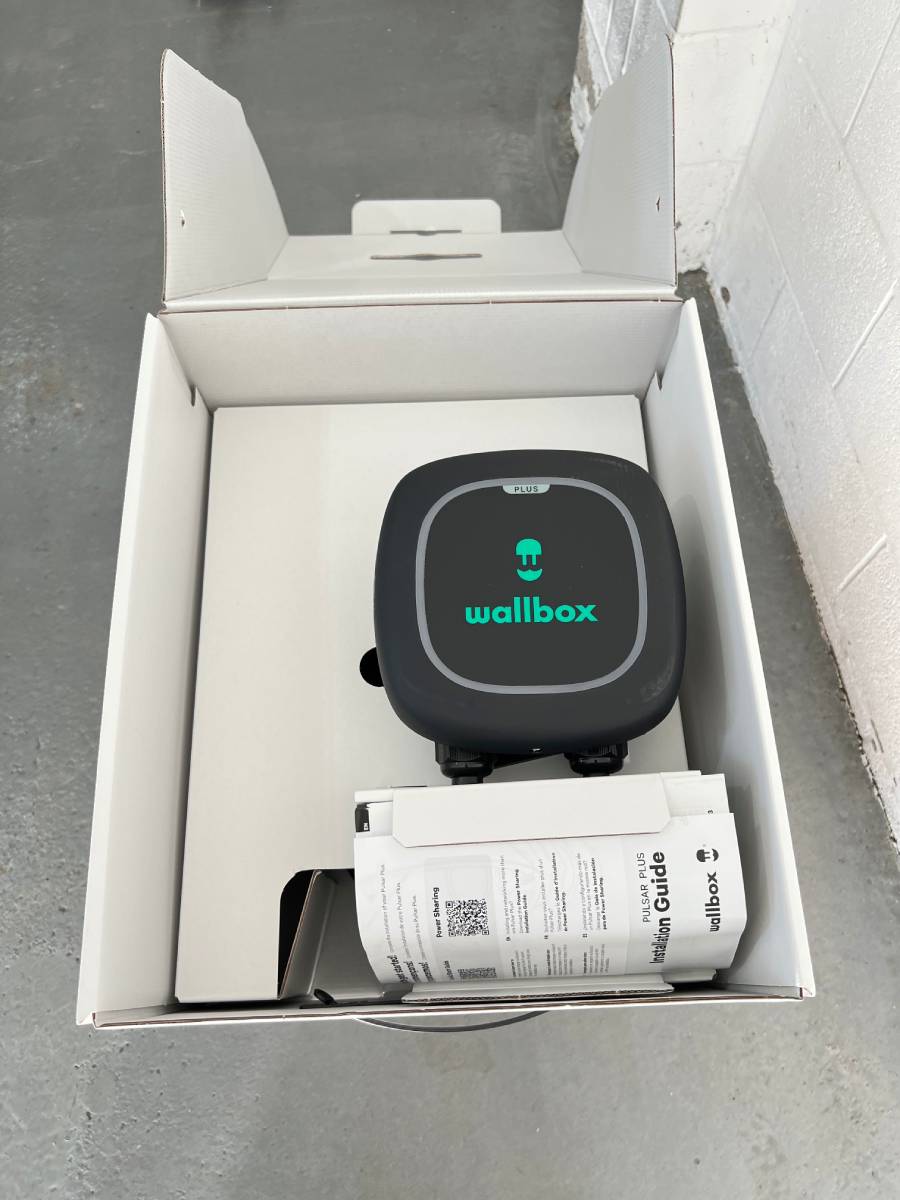
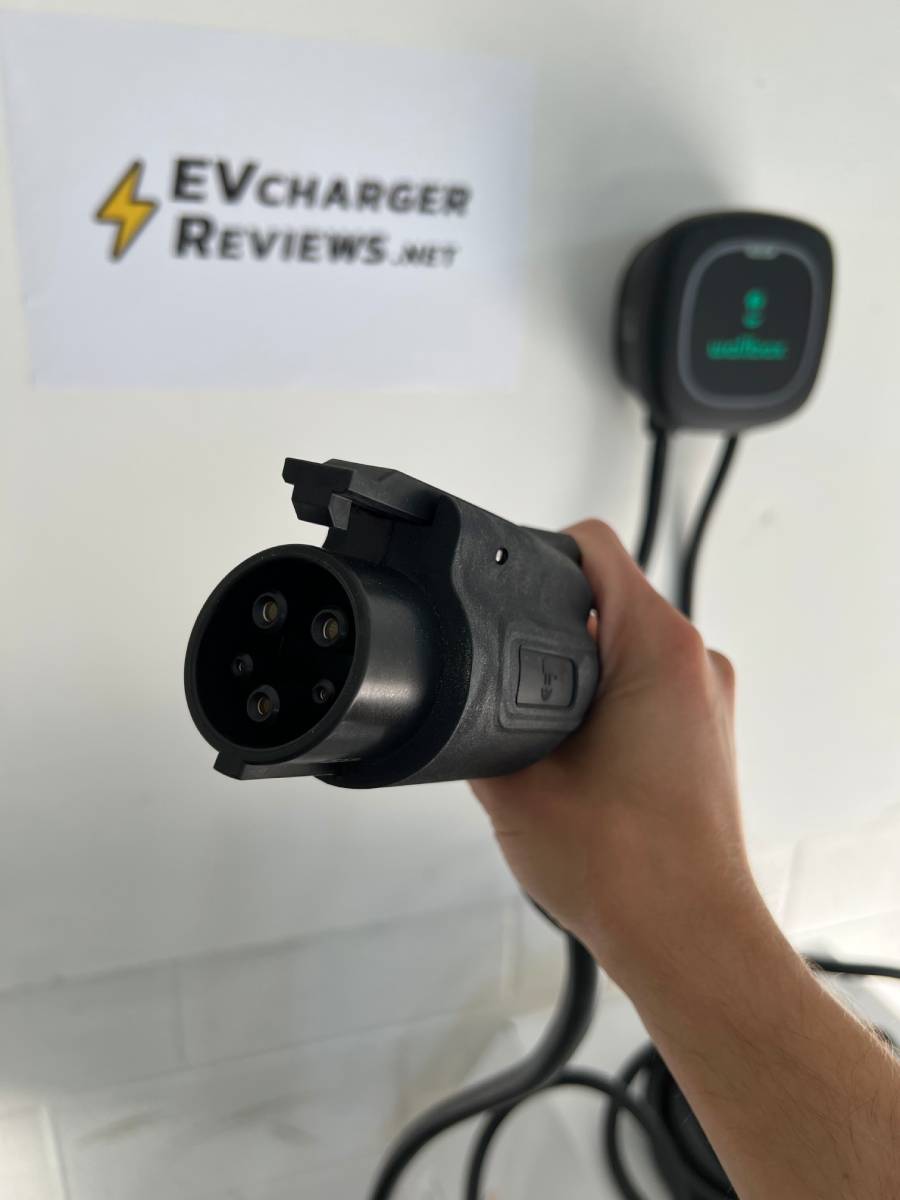
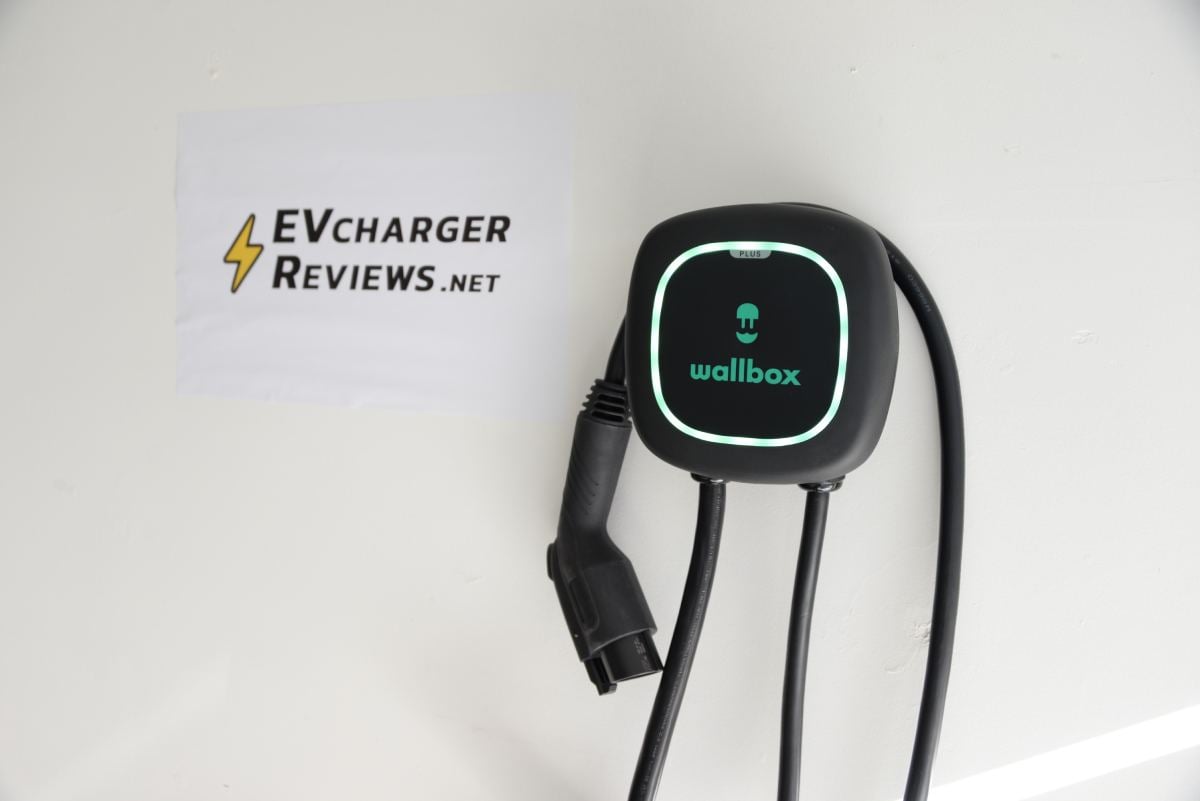
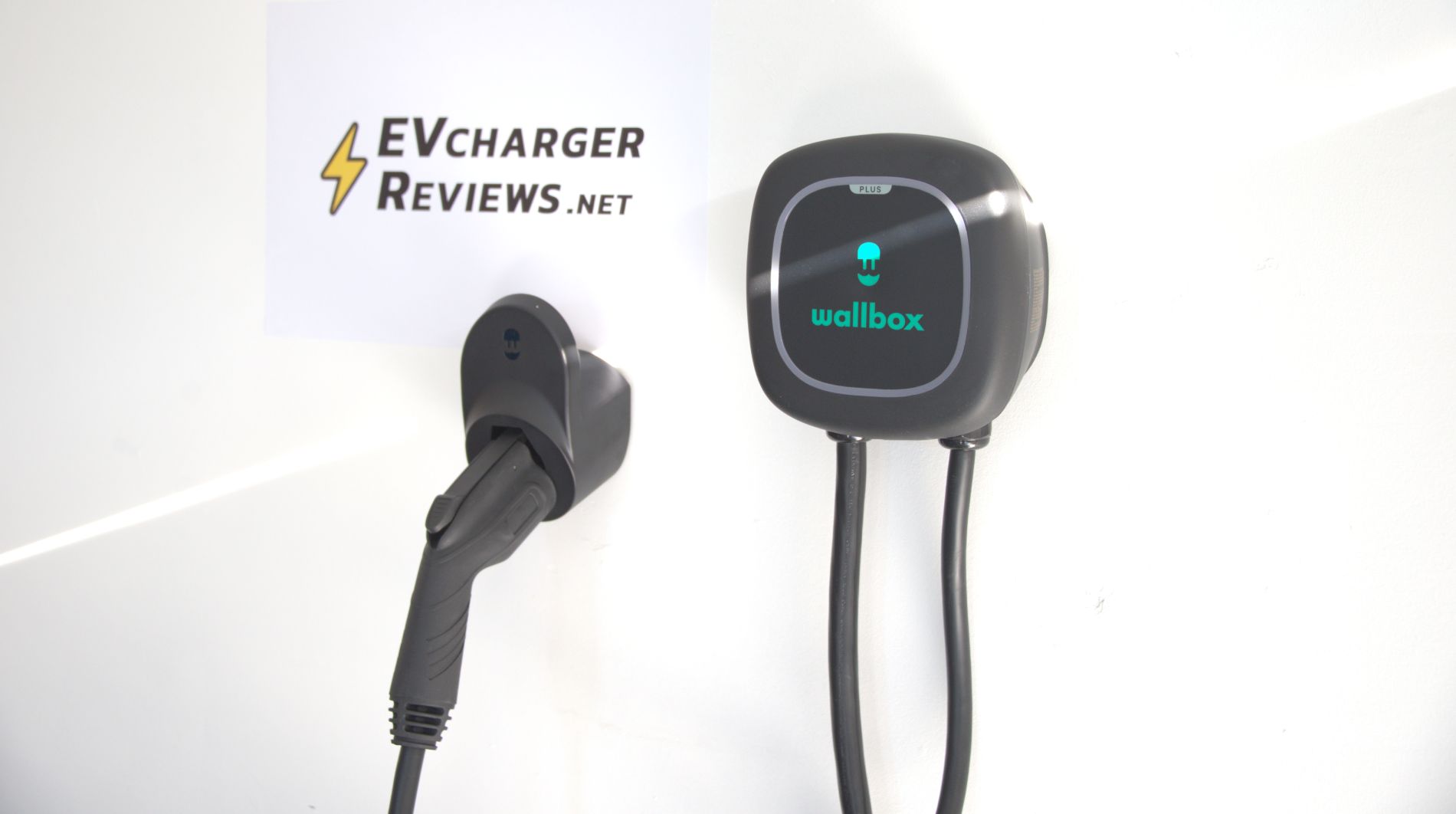
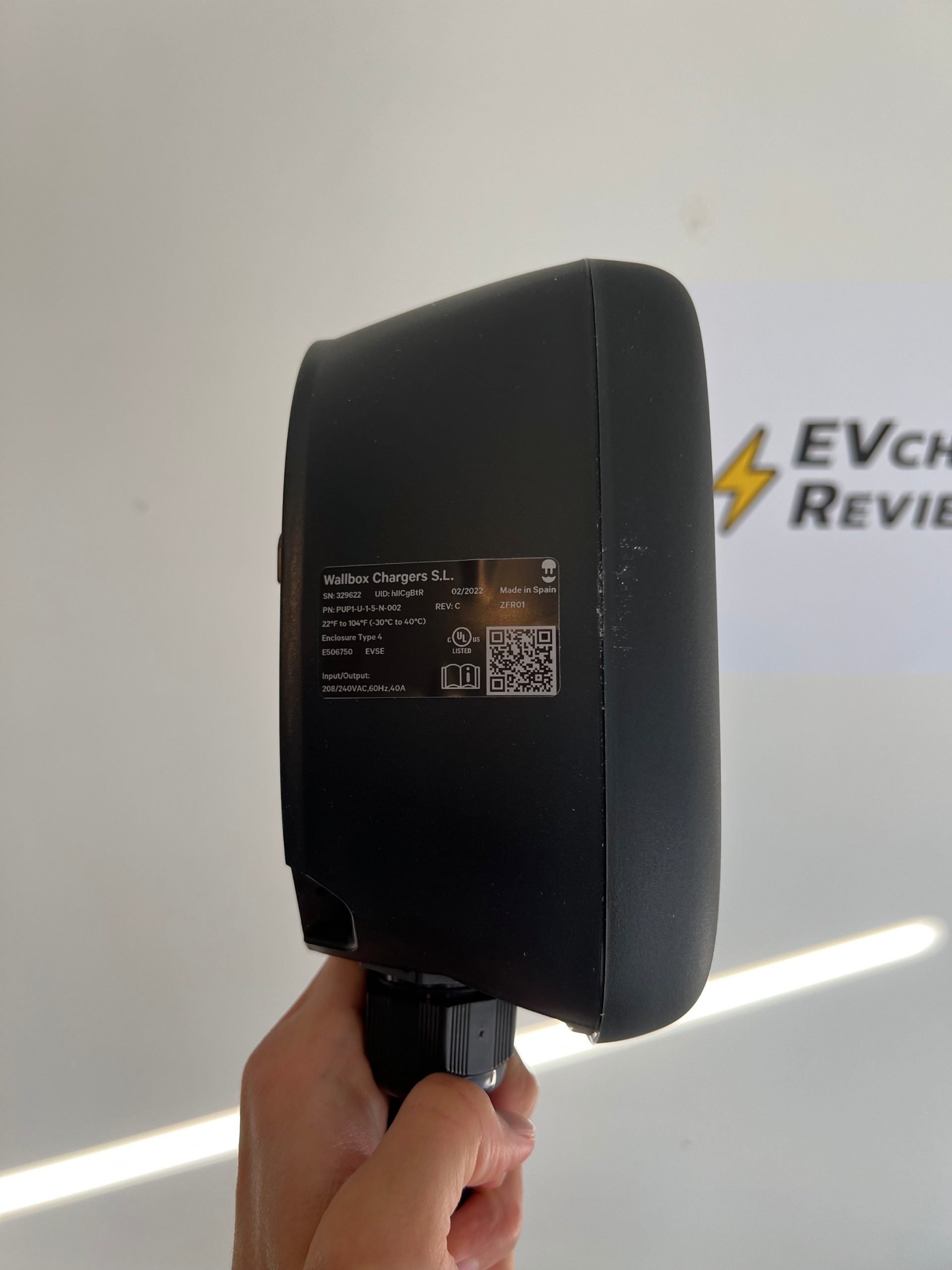
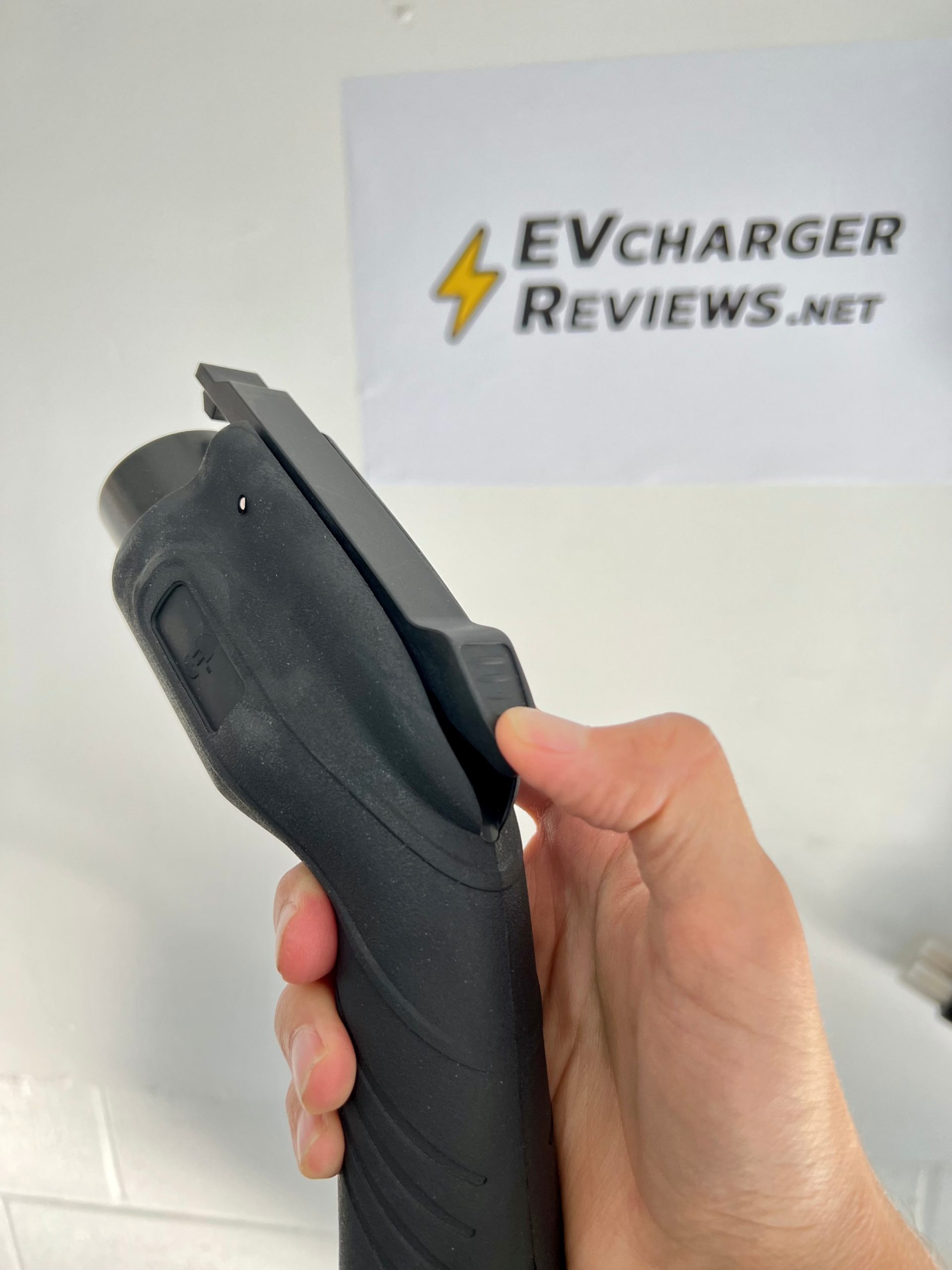
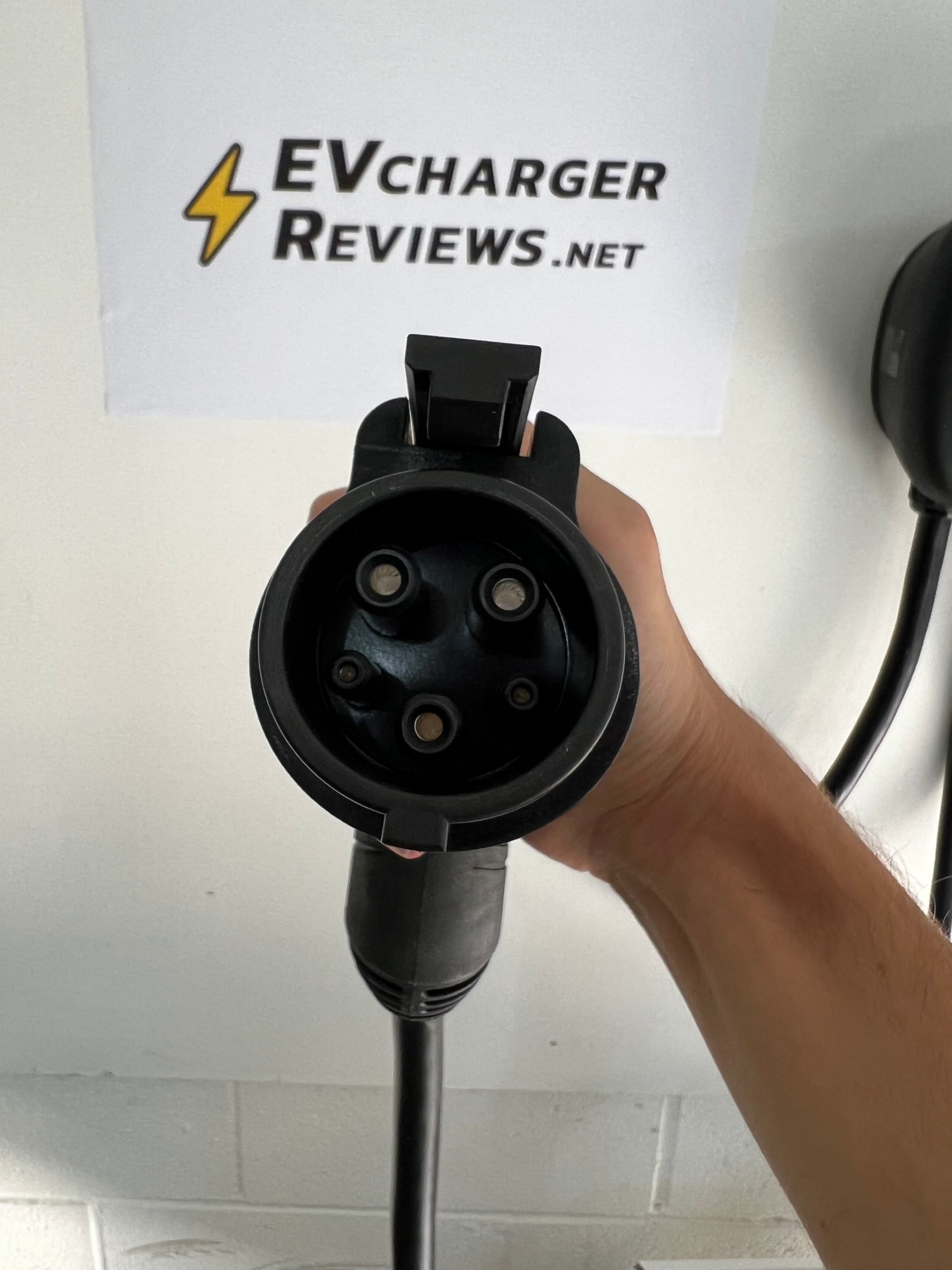
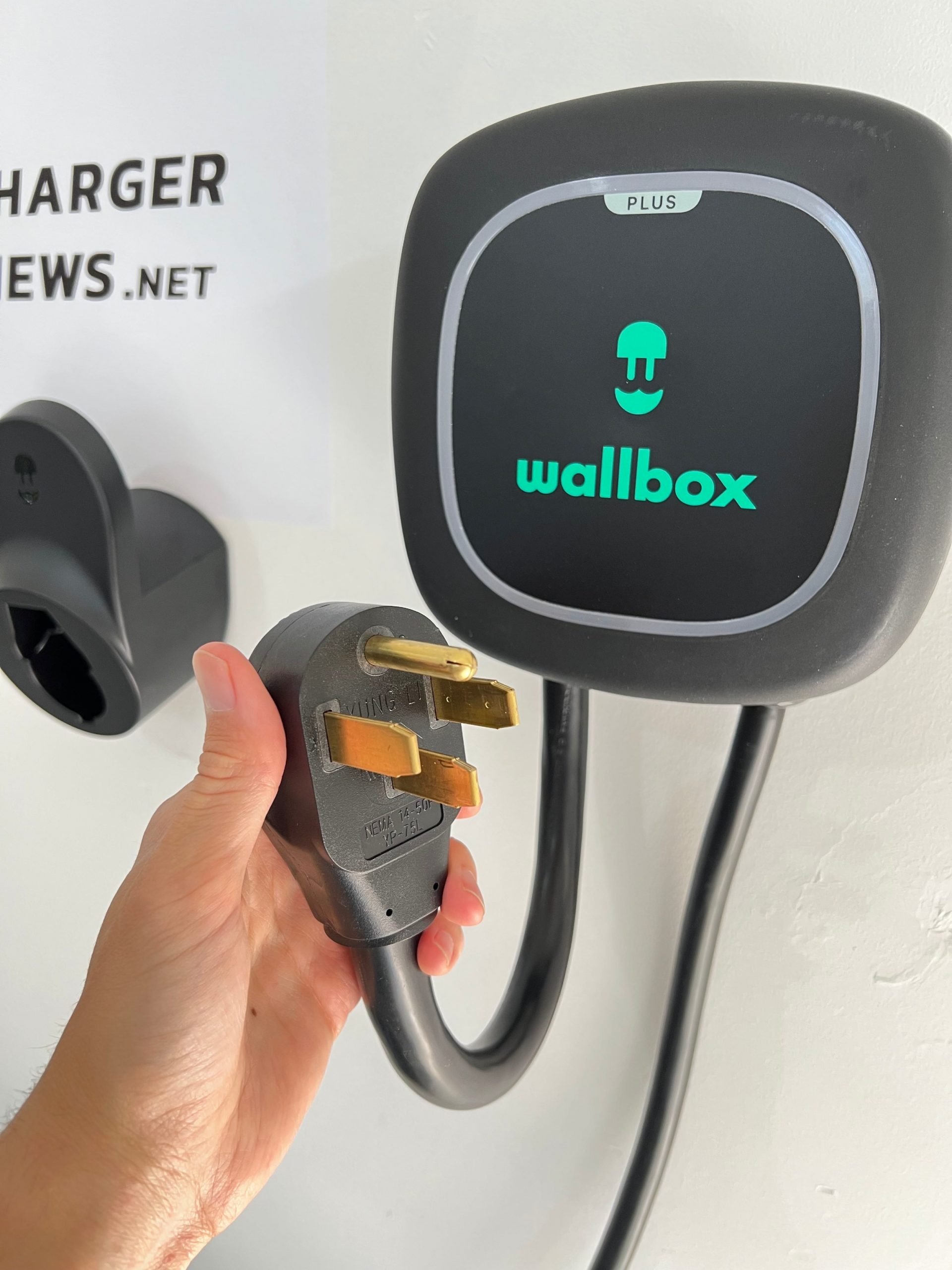
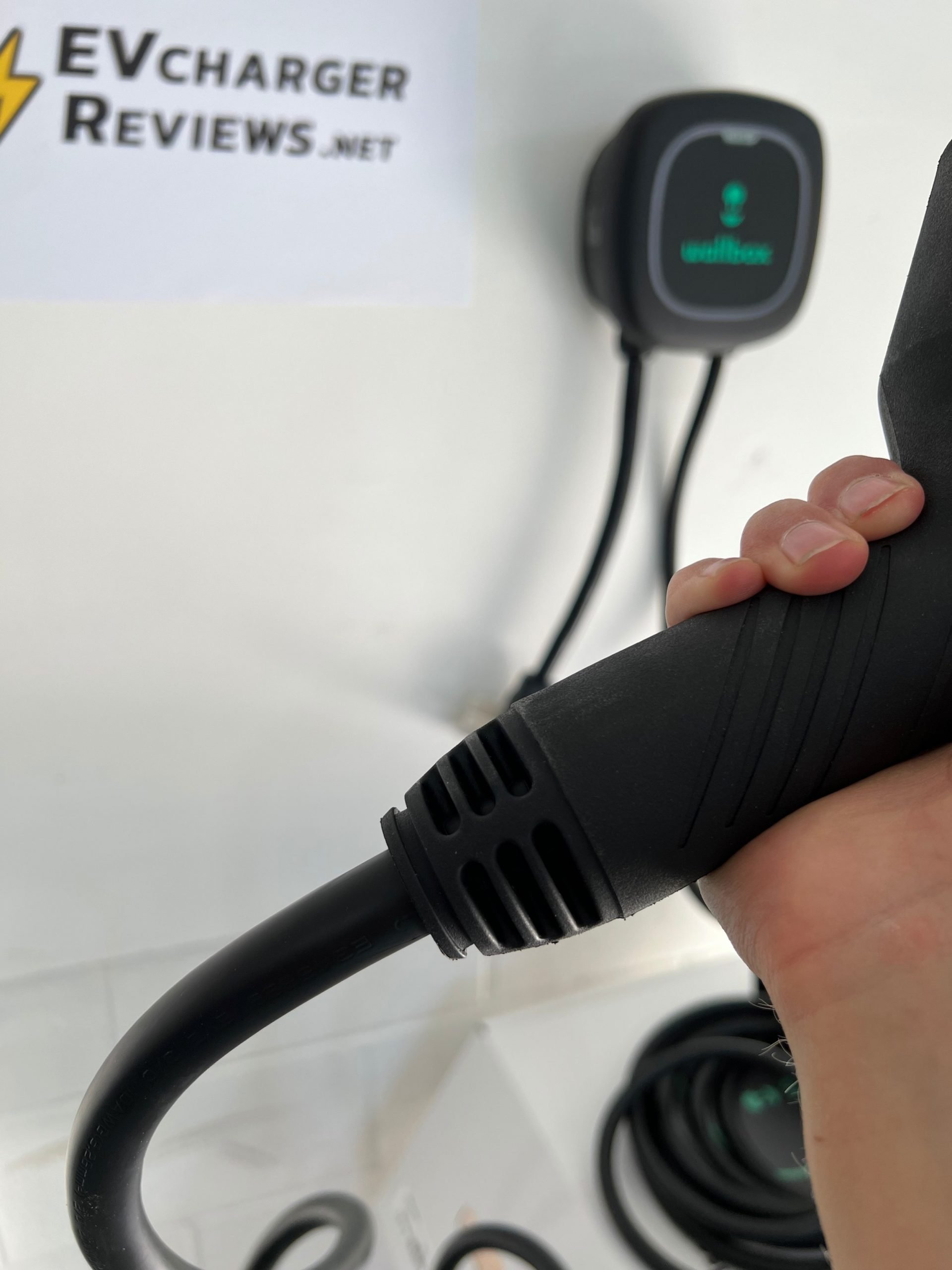
EVchargerReviews.net EVSE Review Methodology
We get the product into our facility, unbox it, inspect it, and install it just like the end user. We have a two-EV car garage with many electric miles accumulating weekly. We take EVSEs through a suite of tests, from short charging sessions, to long overnight charging sessions. We look at whether the claimed features work as expected. We check performance under challenging conditions; does the cord hold up to cold weather? Does the charging station throttle down amps due to heat and thermals? Does the Wi-Fi or Bluetooth drop the connection? Software bugs and glitches will surface during longer-term testing rather than a one-day trial. Measurements are taken on cord thickness and performance, and a thermal camera is used to look for surface hot spots after a 50 kWh stress test.
After living with the charging station product for at least two weeks, we are able to determine how the product compares to rivals, and if it deserves to be recommended to our readers.
Disclosure: Independent review by Michael Kim from EVchargerReviews.net. Our review unit was purchased from Amazon and not provided by the manufacturer. We participate in affiliate programs, and we may earn income when our readers use our links. We hope this is fair, based on the amount of work that goes into our reviews.
Considering buying a Tesla? Use our referral link to get $1,000 off, and help support our content.
